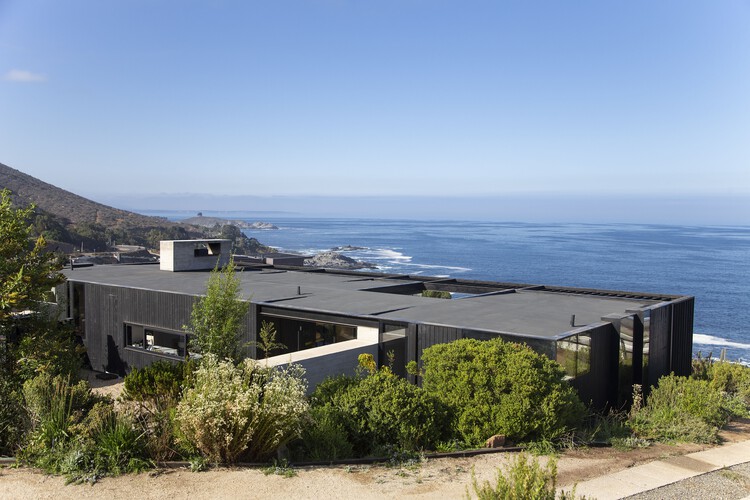
-
Architects: Tololo Ugarte
- Area: 170 m²
- Year: 2019
-
Photographs:Mauricio Duarte Arratia



Text description provided by the architects. La Casa Z is a weekend retreat located in the coastal resort of Zapallar, facing the Chilean Pacific Ocean, 150 km from Santiago.



The project was born from the commission to design a space that would function as a kind of observatory of nature and its surroundings. To achieve this, the first driving idea was to semi-bury the house, in such a way that the vegetation would dialogue with the house on the same scale and allow those who inhabit it to feel immersed in the landscape.


Likewise, the project sought to generate a result that expressed a certain ambiguity between what is inside and outside the house, achieved through the play and alternation between elements of large openings and closures towards the garden. In this way, the main access is proposed as a space of total transparency that allows you to cross the house with your eyes and that, together with a water mirror, generates the sensation that the sea reaches the entrance door.


The interior views open up to both the sea and the hills in a double-span scheme that, through an extended central circulation, is distributed to the rooms located on both sides. In turn, there are two concrete elements (chimney and access wall) that configure the morphology and distribution of the rooms, while functioning as a visual anchor of the project with the terrain.


The work is proposed as a flexible and adjustable space depending on the use and number of guests who inhabit it. This quality is possible through a series of enclosures and movable doors that allow the line between public and private to be blurred. In this way, the master bedroom can open to the living room through two sliding doors that hide inside the chimney. It is also possible to divide the house into two, generating clusters of independent rooms.


The materiality of the project is composed of two large concrete blocks that inspire a strongly brutalist gesture that, in contrast to the lightness of the wooden and glass enclosures, manage to stand out and be clearly understood as the main axes of the project.





















